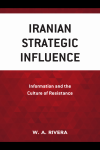Zusammenfassung
Since the 1979 Islamic Revolution, the strategic culture of resistance has dominated Iran’s strategic objective and foreign policy preference formation. Iran is a revisionist state that lacks overwhelming military and economic dominance in its near abroad, as such two pillars have emerged to support and export their strategic culture of resistance. These are Adaptive Resistance (pragmatism) and Designed Redundancy (deniability and insulation). These two themes of resistance provide content and structure to their strategic Influence campaigns, where “strategic Influence is the use of the elements of national power—diplomatic, military, economic, with and through information—to shape the information and operational environment in order to erode the will of the enemy…. This ‘new’ way of war is predicated on building narratives, activating identities, mobilizing proxies, and disorienting targets through the use of information in service of strategic goals.” Strategic influence is the way in which elements of the strategic culture of resistance are executed in Iran’s near abroad. To combat and defeat strategic influence campaigns, it is necessary to understand both the strategic cultural factors at play and the strategic influence campaigns that Iran deploys.
Schlagworte
Military Economy Diplomacy Syria Iraq Proxy Strategy Islamic RevolutionKeywords
Lebanon- i–x Preface i–x
- 1–14 Introduction 1–14
- 107–152 Chapter 8: Iraq 107–152
- 153–178 Chapter 9: Syria 153–178
- 179–224 Chapter 10: Conclusion 179–224
- 225–226 Notes 225–226
- 227–232 Bibliography 227–232
- 233–234 Index 233–234
- 235–236 About the Author 235–236

